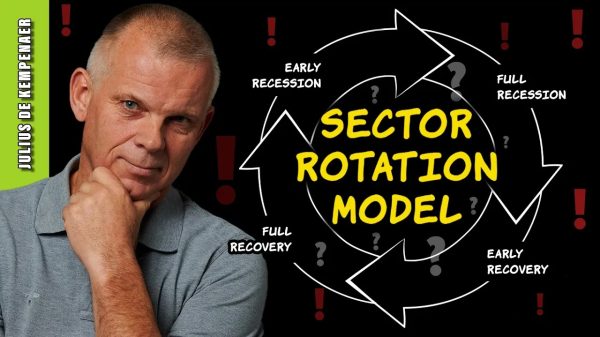Are monopolies inherently bad for the economy? This question has been debated among economists, politicians, consumer welfare advocates, and other groups for centuries now. Adam Smith famously railed against one of the major monopolies of his day, the East India Company. But Smith was not a blanket anti-monopolist: his complaint against the East India Company was the quasi-state-like power it had to raise armies and administer justice. These powers, Smith argued, belonged to the government and the government alone. Monopolies were not inherently bad, and indeed could be valuable by pooling together resources to take on dangerous adventures. Furthermore, Joseph Schumpeter and many Austrian economists argue that monopolies only persist when there are governmentally created and enforced barriers to entry. Monopolies represent a divergence from the natural course of economic activity.
Discussions on monopolies are no less nuanced in 2024 than when Smith was writing in the late 1700s. Legal theories debate when the government should step in and break up monopolies. Some, such as the New Brandeisian movement, treat monopolies as per se harmful and seek to break them up. Other theories, like the Consumer Welfare Standard, argue that monopolies should only be broken up when they are shown to harm the consumer.
Underlying all these theories is a discussion of how to measure monopoly. Profits are discussed as evidence of monopoly, but there are lots of monopolies that earn losses (the US Post Office, for example). Barriers to entry are sometimes considered, but it is difficult to distinguish what is an artificial barrier from a natural one. Market concentration is a favorite measure. In this article, I will draw on the insights of Ronald Coase to discuss why market concentration is misleading.
A monopoly is just a firm, so let us begin our conversation there. Why do firms exist? Ronald Coase answered this question back in 1937 with his paper “The Nature of the Firm.” Firms exist because there are costs to using the market mechanism. Firms reduce these transaction costs, both internally by coordinating activity within the enterprise and externally by acting as a middleman between final users and producers. Consider, as an example, my breakfast this morning: I had eggs and milk (both from American farms), salt from Spain, black pepper from Vietnam, a banana from Guatemala, and coffee roasted in New Orleans. Rather than travel the globe for these ingredients, I need only go a half-mile down the road to my grocery store, Rouses. They handled all that searching, importing, and sorting for me. They reduced the transaction costs from several thousand dollars and many days of travel, to about 10 minutes in the store and about $5 for that meal. Even though the monetary price of the food may be higher than if I bought directly from the producers, the total (non-monetary plus monetary) costs were prohibitively high. I, the consumer, gained significantly.
Despite Coase’s paper being nearly 90 years old and cited some 54,000 times (according to Google Scholar), I contend the main idea of the paper is still misunderstood. Much like his later paper “The Problem of Social Cost,” it seems many scholars just nod sagely when reading the paper but then go about their daily lives as if he said nothing. “The Nature of the Firm” flips our thinking about firms on its head and leads to some surprising conclusions, especially in discussions of monopoly.
Legal theories of antitrust often use market concentration as a measure of the monopoly power of a firm. Market concentration is a measurement of the extent to which a firms represents the total sales of a market.Let’s say we have two markets, each with 100 customers served by 100 firms. In Market A, each firm only sells to one individual, so each firm only has 1 percent of the market. In Market B, one firm serves 99 customers and the remaining 99 firms compete to serve the reminding customer. That one firm has a 99 percent market concentration. Market B is much more concentrated than Market A, as it is dominated by one firm.
Market concentration is usually treated as per se evidence of monopoly. Indeed, market concentration is closest to how economists define monopoly: one firm. Consequently, markets dominated by one or two firms tend to be scrutinized for antitrust action. This definition is not without problems, however: market concentration depends upon how we define a market. For example, we might consider the console video game market as fairly concentrated with three primary sellers: Nintendo, Sony, and Microsoft. But if we were to expand the definition away from just consoles, the market becomes much less concentrated, as computer and cellphone games makers now are included. We expand the definition to “media” in general, and now we have a highly competitive market with video games, computers, movies, books, and more, produced by many firms.
Market concentration as a measure of monopoly power can also be misleading when firms arise which lower transaction costs in the market. By lowering transaction costs, firms can make the market more competitive, even if the market is concentrated. A good example of this is Amazon.
The Federal Trade Commission (FTC) recently launched an antitrust investigation into Amazon, alleging the firm had used monopoly power to suppress competition. Through the Amazon Marketplace, Amazon supposedly limits competition to promote certain sellers and brands at the expense of others. Prima facie, this complaint may make sense, but the economic understanding of a firm discussed above gives us reason to question the FTC’s argument. We must ask the question “as compared to what?” Absent Amazon Marketplace, would these sellers and their listed products exist? Amazon Marketplace reduces the cost, in both money and time, of online buyer-seller transactions. These independent sellers get access to Amazon’s platform, Amazon’s customers, Amazon’s payment handling system, and as such are able to quickly and efficiently coordinate with potential buyers. All of these transaction costs, when not subsidized by a large firm, can represent a significant hurdle to would-be sellers. By reducing transaction costs, Amazon increases the number of sellers (and buyers) in the market; they make it easier for sellers to enter the market, find buyers, and complete transactions. Thus, we see the FTC’s complaint gets things exactly backward: Amazon isn’t reducing competition. Amazon is increasing competition! Breaking up Amazon’s supposed monopoly would likely result in less competition, even if it makes the market appear to be less concentrated.
Monopoly remains an important object of study by scholars in law and economics. I contend there is still a case for governments to have antitrust powers, but those powers must be exercised carefully. The Coasean theory of the firm is noticeably absent from antitrust discussions. Failure to understand that firms arise to lower costs can lead to incorrect conclusions, like FTC’s pursuit of Amazon. Incorrect conclusions, consequently, can lead to poor policy that will harm the very people it intends to help. In an increasingly digital world, where transaction costs have rapidly fallen and big firms provide a platform that empowers more small competitors, market concentration is likely becoming a less useful measure of monopoly power.

































